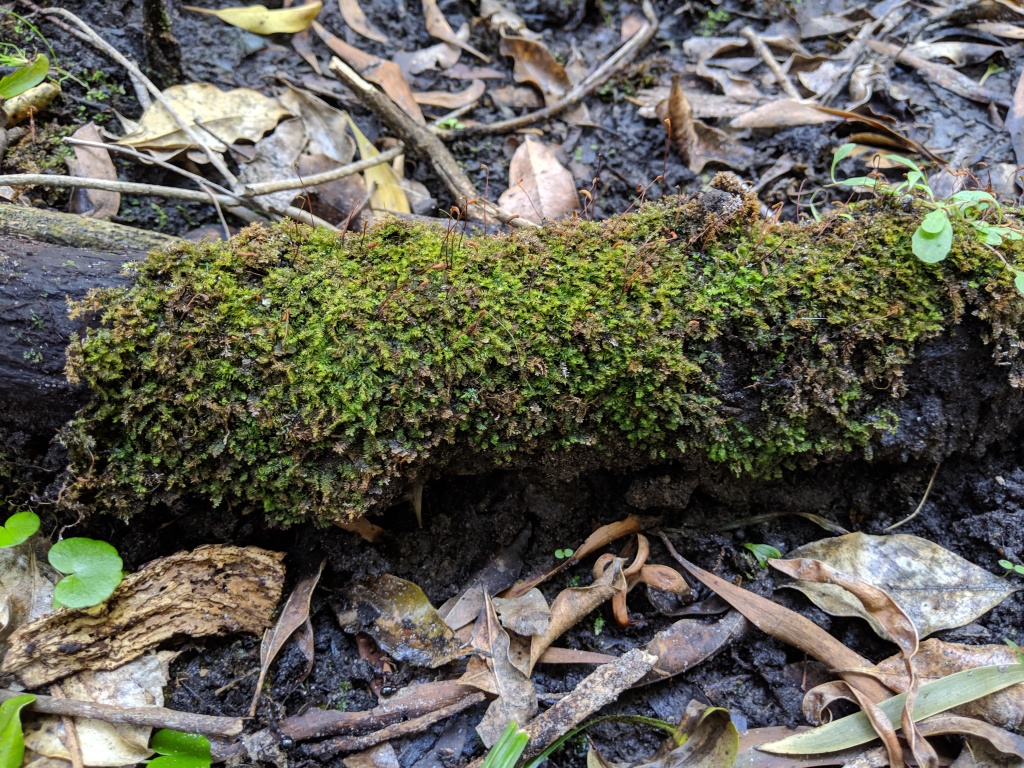Racopilum
Phyllodioicous with dwarf male plants on much larger female plants, or synoicous (not in Victoria). Asexual propagules absent or asexual reproduction by caducous leaves (not in Victoria). Mats on soil, rocks, logs and tree bases. Leaves terete-foliate and monomorphic (not in Victoria) or dorsiventrally flattened, with leaves in lateral rows differing from dorsal rows; costa excurrent as a hairpoint; margins serrulate or serrate toward apices, sometimes entire, without a border; laminal cells almost isodiametric, shortly rhomboidal to elongate-hexagonal, becoming rectangular toward base, smooth or mammillose on both sides. Setae smooth or papillose (not in Victoria), twisted clockwise in the upper half, twisted anticlockwise in the lower half. Capsules inclined to horizontal, rarely erect, curved or nearly straight, deeply grooved. Calyptra cucullate or mitrate (not in Victoria), with a few hairs or densely hairy. Operculum narrowly conic (not in Victoria) or straight- or oblique-rostrate from conic base. Peristome double; exostome of 16 entire teeth; endostome segments as long as exostome or slightly shorter; cilia present.
Around 20 species throughout the tropical and subtropical regions of the world, extending into the temperate regions of the Southern Hemisphere; one species in Victoria.
 Spinning
Spinningvan Zanten, B.O. (2006). A synoptic review of the Racopilaceae (Bryophyta, Musci). 1. Asian, Pacific and Australasian species of the genus Racopilum. Journal of the Hattori Botanical Laboratory 100: 527–552.
van Zanten, B.O. (2006). Racopilaceae, in P.M. McCarthy (ed.). *Flora of Australia * 51: 371–376.



